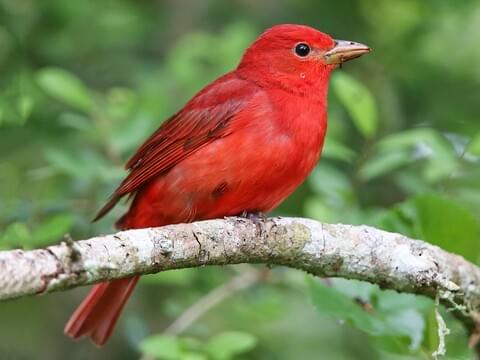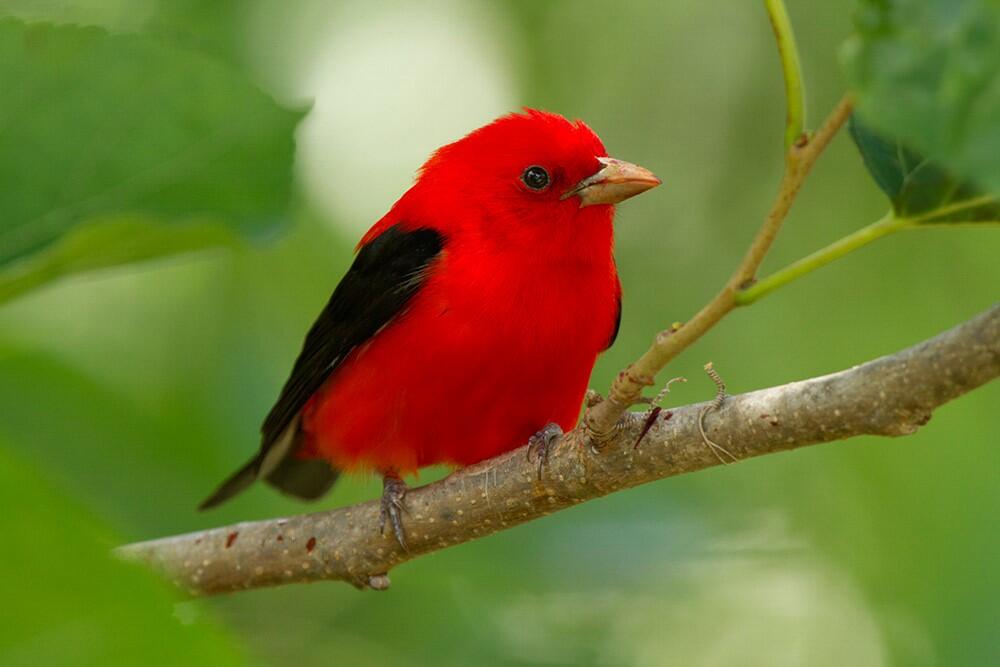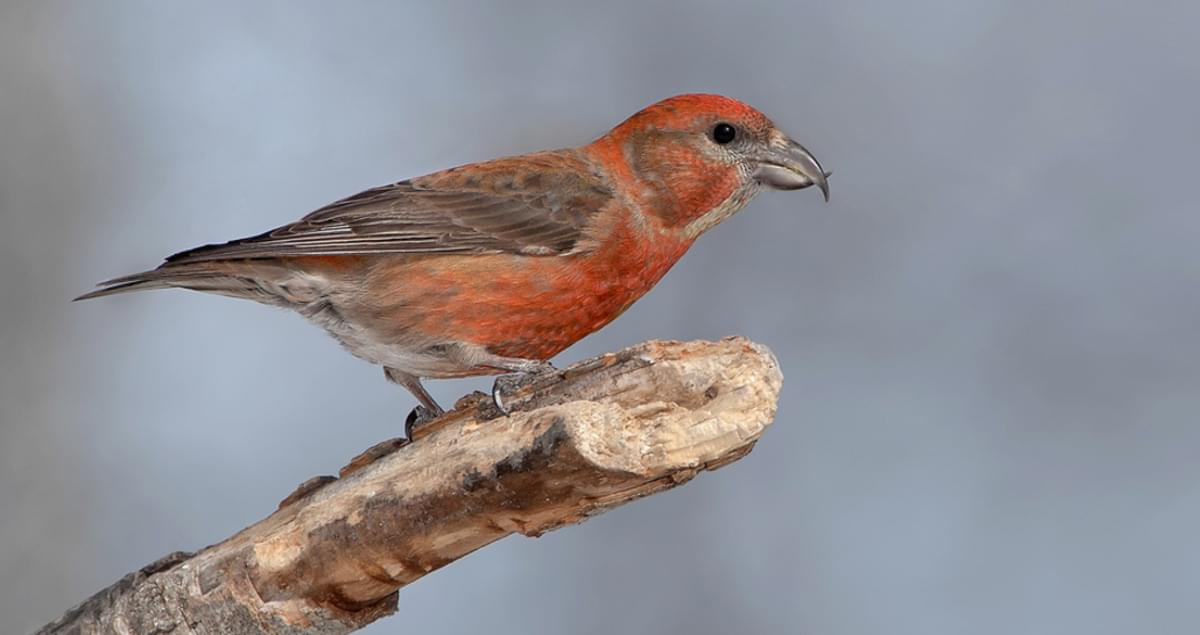When you spot a flash of brilliant red darting through the trees, it’s easy to assume you’ve seen a cardinal. After all, the northern cardinal is one of North America’s most iconic and beloved red birds. But not every crimson avian is a cardinal! There are actually several stunning species of red birds that aren’t cardinals at all. These clever look-alikes can fool even the most experienced birders at first glance.
In this article, we’ll introduce you to 8 gorgeous red-feathered friends that are commonly mistaken for cardinals. By learning a few key identifying features, you’ll be able to tell these reddish orange birds apart like a pro. Get ready to impress your birding buddies with your red bird expertise! 🌟
Read Also: Birdwatching for Beginners: Your Ultimate Guide to Starting a Rewarding Birding Hobby
Table of contents
Open Table of contents
-
- 1. Summer Tanager: The “Cardinal in Disguise” 🎭
- 2. Pyrrhuloxia: The Desert Cardinal Doppelganger 🌵
- 3. Scarlet Tanager: The Flamboyant Forester 🍁
- 4. Vermilion Flycatcher: The Dashing Desert Dweller 🏜️
- 5. Phainopepla: The Desert Dandy 🎩
- 6. Red Crossbill: The Conifer Connoisseur 🌲
- 7. Pine Grosbeak: The Gentle Giant 🍎
- 8. Tufted Titmouse: The Pint-Sized Pretender 🎩
- Appreciate the Diversity of Red Birds 🎨🐦
1. Summer Tanager: The “Cardinal in Disguise” 🎭

The summer tanager is a master of deception in the bird world. Males of this species sport a vivid, fire engine red plumage that’s a dead ringer for a cardinal at a distance. But upon closer inspection, you’ll notice a few distinct differences:
- Smooth, tapered beak (unlike the cardinal’s thick, seed-cracking bill)
- No prominent crest (cardinals have a jaunty peaked crown)
- Jet black wings and tail (cardinals are red all over)
These migratory songbirds breed across the eastern and central U.S. in open woodlands. Listen for the male’s robinlike song in late spring as he proclaims his territory from the treetops.
Fun fact: The summer tanager is sometimes called the “beebird” because of its unusual ability to catch stinging insects in midair! It will often beat its prey against a branch to remove the stinger before chowing down. 🐝
How to Attract Summer Tanagers to Your Yard
If you live within the summer tanager’s breeding range, you can entice these gorgeous birds to visit your property with a few simple tips:
-
Plant native berry-producing shrubs like serviceberry, blackberry, and mulberry. Summer tanagers love to snack on juicy fruits during the nesting season.
-
Leave some dead trees or snags standing if it’s safe to do so. These birds often nest in natural cavities or old woodpecker holes.
-
Avoid using pesticides in your yard. Summer tanagers rely on insects like bees, wasps, cicadas, and beetles to feed their growing chicks.
With a little bit of tanager-friendly landscaping, you might be lucky enough to host a breeding pair of these stunning red birds in your own backyard!
2. Pyrrhuloxia: The Desert Cardinal Doppelganger 🌵

Venture into the arid scrublands of the desert southwest, and you might encounter this uncanny cardinal look-alike. The pyrrhuloxia, also known as the desert cardinal, shares the same chunky build, spiky crest, and reddish plumage as its more famous cousin. However, a few key field marks set it apart:
- Long, bright yellow, parrotlike bill
- Gray head and back with red “highlights”
- Distinctive call that sounds like purr-hu-LOXE-ee-ya
True to its nickname, the pyrrhuloxia is a denizen of mesquite thickets and cactus-studded grasslands. It often visits desert feeders to snack on seeds in winter.
Interesting Pyrrhuloxia Behaviors
Pyrrhuloxias have a few quirky habits that make them fascinating to observe:
-
Cactus pruning: These desert dwellers sometimes use their powerful beaks to snap off spiny cactus pads, creating a more comfortable perch to rest on!
-
Ant eating: During the summer months, pyrrhuloxias will follow armies of marching ants, picking off the insects one by one as a tasty snack.
-
Singing duets: Mated pairs of pyrrhuloxias will often sing synchronized duets, their voices perfectly complementing each other in a display of avian teamwork.
So if you’re birding in the desert southwest, keep an eye out for this cardinal doppelganger and its intriguing antics!
3. Scarlet Tanager: The Flamboyant Forester 🍁

If you’re lucky enough to spot a male scarlet tanager in breeding plumage, you won’t soon forget it. These brilliant red birds look like cardinals that have been dipped in black ink, with jet-dark wings and tails setting off their crimson bodies. A few key characteristics distinguish them:
- Larger than a cardinal, with a more slender build
- Lacks the cardinal’s heavy, seed-cracking bill
- Prefers the upper canopy of mature deciduous forests
- Females are a uniform olive-yellow color
In late spring, listen for the male scarlet tanager’s hoarse, robinlike song ringing out from the treetops as he establishes his nesting territory.
The Scarlet Tanager’s Fascinating Migration
Scarlet tanagers are long-distance migrants, wintering in the Andean foothills of South America and returning to North America to breed each spring. Their incredible journey is fraught with perils:
-
Nocturnal flights: Scarlet tanagers migrate at night, using the stars to navigate. This makes them vulnerable to collisions with tall buildings and communication towers.
-
Gulf crossing: To reach their wintering grounds, scarlet tanagers must make a nonstop flight across the Gulf of Mexico - a journey that can take up to 18 hours!
-
Habitat loss: Deforestation in both their breeding and wintering grounds poses a serious threat to scarlet tanager populations.
Conservation efforts like preserving mature forest habitats and reducing light pollution can help ensure that these breathtaking birds continue to grace our skies for generations to come.
4. Vermilion Flycatcher: The Dashing Desert Dweller 🏜️

Don’t be fooled by this flashy flycatcher’s red plumage and spiky crest – it’s no cardinal! A few giveaway field marks include:
- Slender, flattened bill adapted for catching insects on the wing
- White underparts contrasting with brilliant red crown, face, and breast
- Often seen perching on exposed desert shrubs or fence posts
True to its name, the male vermilion flycatcher is an eye-popping shade of orangey-red that seems to glow in the desert sun. These tiny but mighty birds often nest near water sources like desert washes and irrigation ditches.
The Vermilion Flycatcher’s Aerial Antics
Vermilion flycatchers are masters of the skies, performing aerial acrobatics with ease as they hunt for flying insects. Keep an eye out for these dazzling displays:
-
Hover-gleaning: These agile birds will sometimes hover briefly to pluck insects from foliage or tree bark.
-
Hawking: Vermilion flycatchers often perch conspicuously, waiting for an insect to fly by before dashing out to snatch it midair.
-
Tail-pumping: When excited or agitated, vermilion flycatchers will rapidly pump their tails up and down, flashing their vivid red feathers.
With their brilliant plumage and aerial antics, vermilion flycatchers add a splash of color and excitement to the desert landscape.
5. Phainopepla: The Desert Dandy 🎩

At first glance, the male phainopepla’s glossy black plumage and distinct crest might call to mind a cardinal in disguise. But this desert specialist has a few tricks up its sleeve:
- Unique, upright posture while perching
- Flashy white wing patches visible in flight
- Prefers dry, desert habitats with mistletoe clumps
This nomadic species follows the desert bloom, shifting its range to take advantage of seasonal fruit crops. In spring, look for the male’s acrobatic courtship flights as he woos his mate with mid-air twists and turns.
The Phainopepla’s Mistletoe Mutualism
Phainopeplas have a fascinating relationship with desert mistletoe plants:
-
Mistletoe maven: These birds are the primary seed dispersers for desert mistletoe, eating the berries and excreting the seeds on tree branches where they can germinate.
-
Nesting necessities: Phainopeplas often build their nests within clumps of mistletoe, using the dense foliage for protection from predators and the elements.
-
Winter wanderer: In winter, phainopeplas will travel far and wide, following mistletoe fruiting events across the desert southwest.
This mutually beneficial relationship helps ensure the survival of both the phainopepla and its parasitic plant partner in the harsh desert environment.
6. Red Crossbill: The Conifer Connoisseur 🌲

It’s easy to mistake a flock of red crossbills for cardinals at your feeder – until you catch a glimpse of their bizarrely twisted bills. These specialized finches sport a few distinct traits:
- Heavy, crossed mandibles adapted for prying seeds from cones
- Often seen fluttering in conifers in winter
- Males are a duller red than cardinals, with browner wings
Red crossbills are nomadic, wandering widely in search of bumper cone crops. They’re one of the only birds in North America that can breed at any time of year, as long as there’s a reliable food source.
Red Crossbill Irruptions
Every few years, red crossbills will stage dramatic “irruptions” - sudden influxes of birds outside their usual range in response to cone crop failures. During these events:
-
Unusual sightings: Red crossbills may show up at feeders far from their typical haunts, often in the company of other “winter finches” like pine siskins and purple finches.
-
Specialized feeding: Watch for red crossbills’ unique feeding behavior as they use their crossed bills to pry open conifer cones and extract the nutritious seeds within.
-
Breeding bonanza: If the cone crop is particularly bountiful, red crossbills may breed during these irruptions, even in the dead of winter!
Keep an eye out for these nomadic finches during winters when cone crops are scarce - you never know where they might turn up next.
7. Pine Grosbeak: The Gentle Giant 🍎
The largest of the “winter finches,” the pine grosbeak can appear cardinal-like with its reddish plumage and stout, seed-eating bill. However, a few key characteristics set it apart:
- Chunky, almost neckless appearance
- Gray back and wings with two bold white wing bars
- Larger than a cardinal, with a less prominent crest
Look for flocks of these gentle giants in winter as they descend from their Canadian breeding grounds to feast on mountain ash berries and maple buds.
Pine Grosbeaks at Your Feeder
While pine grosbeaks are more often spotted in forests and woodlands, they will occasionally visit backyard bird feeders during the winter months. To attract them:
-
Offer sunflower seeds: Pine grosbeaks have a particular fondness for black oil sunflower seeds, which they can easily crack with their powerful bills.
-
Provide platform feeders: These large birds prefer spacious platform feeders or trays that can accommodate their bulky bodies.
-
Plant native fruit trees: Mountain ash, crabapple, and serviceberry are all favorite winter food sources for pine grosbeaks.
If you’re lucky enough to host a flock of these impressive birds, enjoy their quiet presence and gentle demeanor as they fueling up for the cold months ahead.
8. Tufted Titmouse: The Pint-Sized Pretender 🎩

With its jaunty crest and rusty-red flanks, the tufted titmouse might be mistaken for a miniature cardinal at first glance. But this pint-sized pretender has its own distinctive charms:
- Smaller than a cardinal, with a large black eye and gray back
- Prefers deciduous woods and backyard feeders
- Emits a cheery peter-peter-peter song
These curious, acrobatic birds are a familiar sight at suet feeders in the eastern U.S. They often associate with chickadees and other small songbirds in winter flocks.
Titmouse Nesting Habits
Tufted titmice are cavity nesters, meaning they raise their young in tree holes, nest boxes, or other protected spaces. To encourage them to nest in your yard:
-
Provide nest boxes: Titmice will readily use nest boxes with entrance holes sized 1 1/4 inches in diameter.
-
Leave snags: Dead trees or branches can provide natural nesting cavities for titmice and other cavity-nesting birds.
-
Offer nesting materials: In spring, put out tufts of pet fur, small strips of cloth, or other soft materials that titmice can use to line their nests.
By providing these pint-sized pretenders with the right nesting resources, you may be rewarded with the charming sight of a titmouse family in your own backyard!
Appreciate the Diversity of Red Birds 🎨🐦
While northern cardinals may be the most familiar red birds for many North American bird watchers, they’re far from the only crimson-colored species out there. By learning to recognize these 8 stunning look-alikes, you’ll gain a new appreciation for the incredible diversity of red-feathered friends that grace our skies.
So the next time you spot a flash of scarlet in the treetops, take a closer look – you might be witnessing one of these clever cardinal mimics in action! With a little practice and an eye for detail, you’ll be identifying red birds left and right.
Happy birding! 🐦🔭